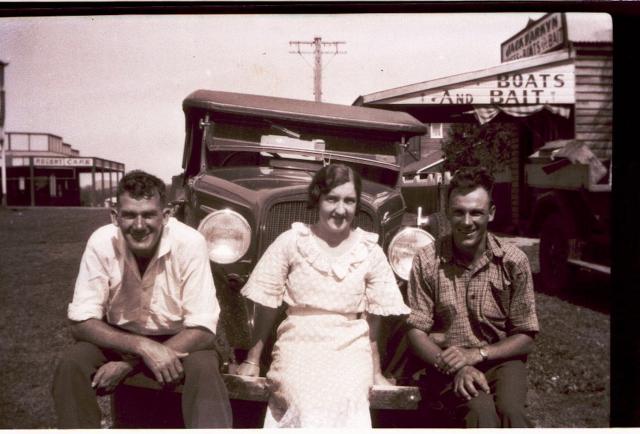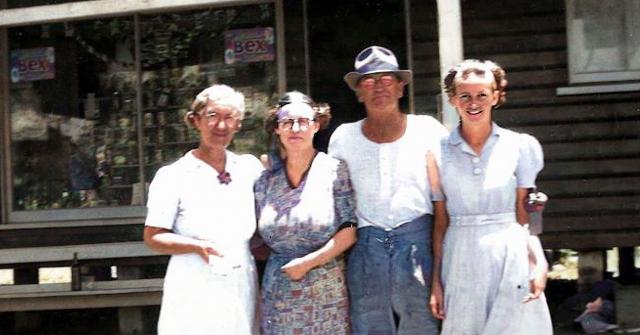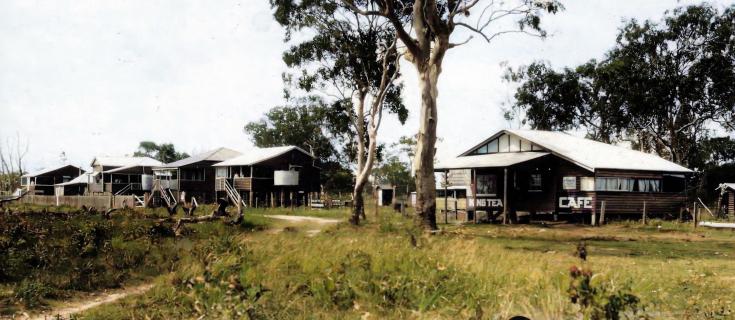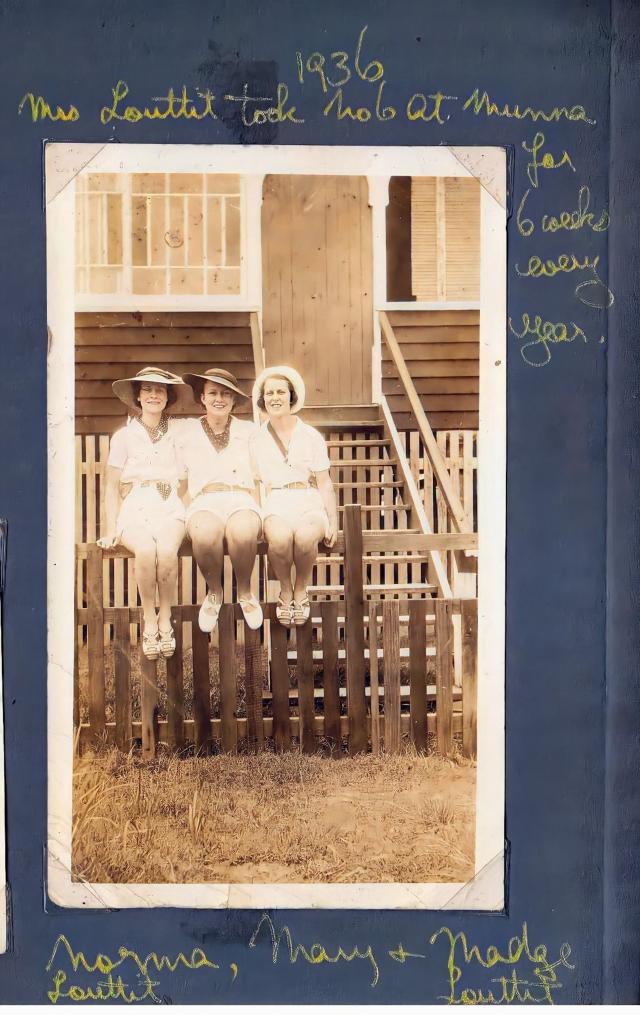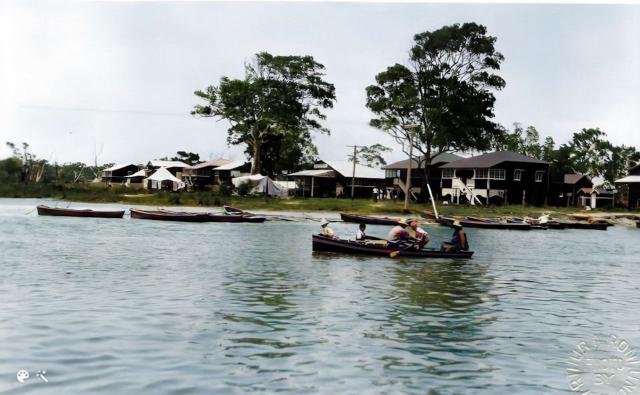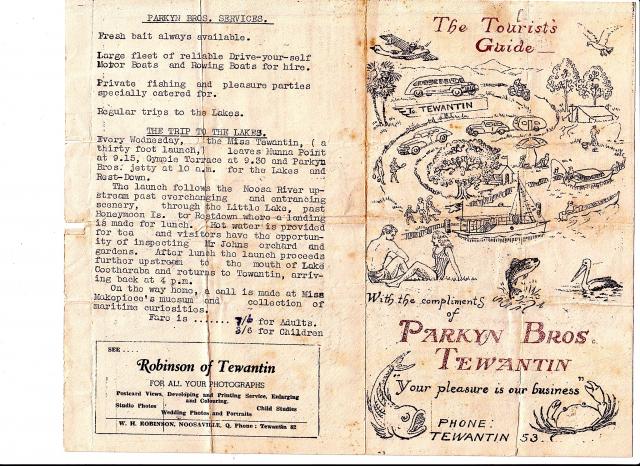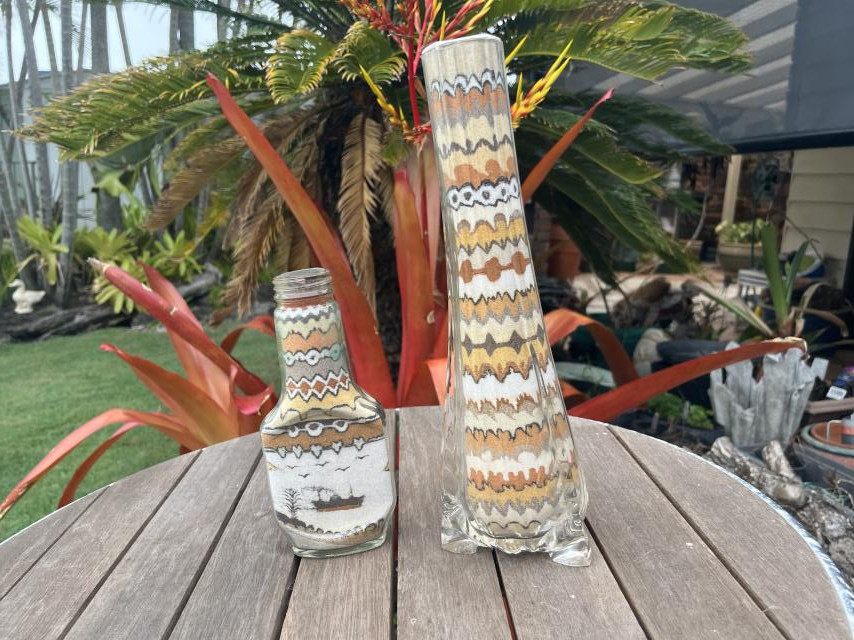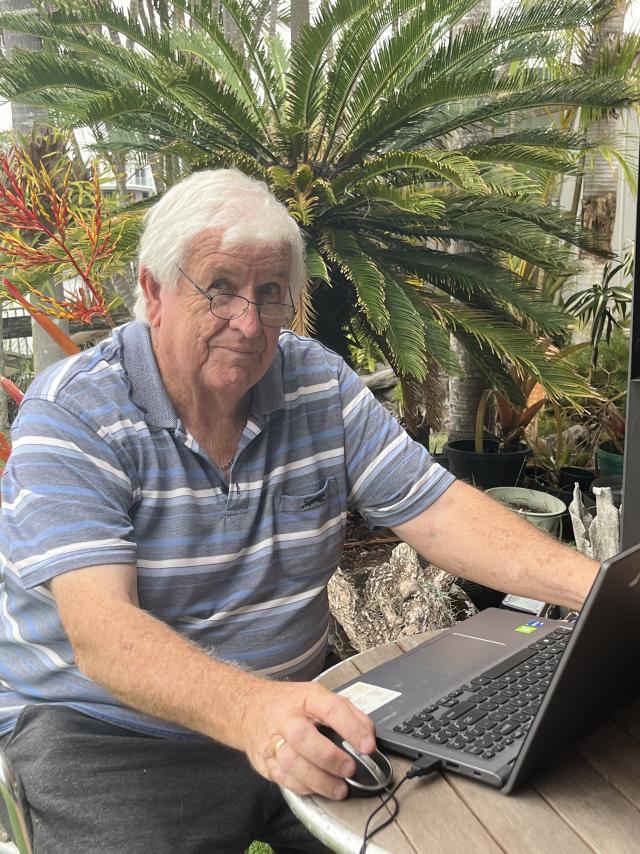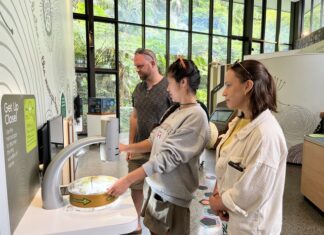
At some point in the early 1950s, Mrs JM Daisy Parkyn, wife of the industrious Noosa tourist operator Jack Parkyn, returned to her Tewantin residence from one of her many voyages home to Cornwall, and was driven, as she always was, to Munna Point to inspect the family’s properties and businesses along that pretty stretch of the Noosa River.
Turning left towards the river at the strip of rebuilt Gympie miner’s cottages that now made up some of Noosa’s finest riverside tourist accommodations, Daisy was mortified to see a new sign that designated the dirt track – the one that her family had created to access the holiday cabins and the campground they had cut from the mangroves and tea tree – Russell Street.
In her absence, had someone – Noosa Shire Council? – gone stark raving mad?
The only Russell she could think that it referred to was Jack Russell, a layabout who owned two blocks along the track, and had built a rough shack on the one closest to the river. Everything else in sight was owned and created by the Parkyn family, their labours of love having established them, alongside the Massouds, as the shire’s leaders in the fast-growing tourism industry.
Daisy must have licked her wounds on behalf of the entire family for months, because by the time she decided to do something about it she had sailed back to England for the season, where she set herself down in her study, overlooking a rugged Cornish cliff tumbling down to the frigid Atlantic, and penned a frank letter to Noosa Shire Clerk AW Dan:
Dear Mr. Dann (sic),
I am writing you re the sign at Munna Pt. We, the Parkyn Family, pioneered Munna Point which was nothing but a Sandfly Wilderness, as you may well remember, and for over 28 years we worked and slaved there clearing the trees and building six houses and our own Parkyn Store for our tenants, and took great pride in doing so. When War came the Army took our new Ford V8 Truck, and our sons… unearthed an old Model T Ford in our backyard on Donnella (sic) … fixed it and Jack and I set off again with our usual daily orders, bread, Courier Mails and our own private Munna Pt Mail Bag, which we collected each morning at the post office … [the guests] were our own happy family and all the years we burnt the old trees and made a lovely camping area. My husband painted and numbered scores of small blocks and even planned proper rows of street convenience for campers … Jack Russell was never any asset to Munna Pt. Certainly he bought the remaining corner, built an old hut in which he lived always, and I never realised until I came back from home last time that Russell St was named after him, and I shall not rest until this wrong has been righted, as no other family in Tewantin has done more to further the whole district in the last 40 years… That street should be called Parkyn Avenue and Jane St on my property should have been Daisy St. Hoping you can fix it all up before I come back.
J.M. Parkyn. (Yes, my mother’s pet name for me was Daisy.)
“I don’t think she ever got a reply,” chuckles Keith Young, whose treasured letter to council, handwritten by his grandmother, is one of many hidden treasures he has unearthed from the Parkyn family legacy.
The family’s history in Noosa Shire goes back to the 1880s when Richard Bray Parkyn emigrated from Cornwall, England, and caught the paddle steamer up to Tewantin to take the coach to the Gympie goldfields.
But young Parkyn liked what he saw along the Noosa River, and like so many of the miners, came back whenever he could. By the time he had risen to the position of mine manager, he had access to some of the disused miner’s cottages, so he transported the timber to Noosa and built his first riverside holiday shack, which he named Shearston.
In the new century, the next generation of Parkyns, led by son Jack, became locked in a (mostly friendly) commercial rivalry with the Massoud family over the supply of river services. While the Massouds main boat, Riverlight, fished by night and ferried kids to school by day, the Parkyns, with their Miss Tewantin, said to be “the sexiest boat on the river”, linked up with the Donovan family to provide transfers from Cooroy railway station to the Donovans’ Laguna House in Noosa Heads, via the Parkyn-owned Tewantin fishing wharf where they boarded the Miss Tewantin for the final leg.
During the 1920s the Parkyns also developed their land at Munna Point, creating a visionary integrated holiday accommodation precinct and campground from a midge and sandfly-infested tea tree swamp, so that when two new bridges finally linked the river towns in 1929, effectively ending their river-based transfer business, they were ready to service a whole new breed of motorised tourists.
The family built six houses and a general store and café (which many years later would become Hot Gillie’s Mex and finally Filligan’s) along one side of the river track, and a network of campsites for tents and caravans, with shelters and amenities shed, along the riverfront on the other side. The business grew steadily through the 1930s and thrived in the postwar leisure boom.
Keith Young was born in Toowoomba in 1946, the son of Syd Young and Jack and Daisy Parkyn’s daughter, Lola. When Syd went off to war with the Air Force, Lola and Keith’s older sister Gloria returned to Tewantin to live with Jack and Daisy. After the war and as Keith grew up in the ‘50s, the Youngs were very much Toowoomba-ites, but Keith has fond memories of trekking down from the range to their other home on the river every second weekend.
He recalls: “Mum had a Morris Minor 1000 panel van and we’d come down the range with the three kids in the back on a mattress. My grandparents still had the boatshed through the ‘50s, and we had wonderful times on the river and in old Tewantin. That’s where I met my wife, Lexie.”
We are sitting in the Youngs living room, overlooking their immaculate garden and a quiet reach of Mountain Creek, a stack of memorabilia in front of us and Keith’s laptop brimming with old family photos he has coloured digitally.
Keith continues: “I met Lex at the speedboat races and then again at the pictures in Tewantin, and we started going out. Then she got a job at Parkyn’s Boats. No family leverage, just got it on her merits, helping the boys check out the hire boats and also serving in the bait shop.”
Lexie chimes in: “Bloody George (Parkyn), he’d bring in these big wine barrels of chicken gut they sold for bait and tell me to get my hand right in there and stir it! Yuck!”
She disappears for a minute and returns bearing two exquisite decorative bottles of coloured sands from Teewah.
“Keith’s mum used to spend two days or more inserting the coloured patterns into the bottles, which were sold as souvenirs at the Parkyn shops. Aren’t they amazing?”
Keith finished his apprenticeship as a carpenter/joiner in Toowoomba, and when he and Lexie married they built a home there where they raised their kids.
Skilled in all trades, Keith was much in demand for building projects all over South East Queensland, and one day his brother phoned to tell him about a job being offered in Kawana. He travelled to the coast for interviews and got the job with an outfit called Transpack Kitchens, so the family relocated to the Sunshine Coast. Transpack went from strength to strength but its owners eventually accepted an offer from the giant Kern Corporation, who soon decided it didn’t fit their business model and began closing it down.
Says Keith: “My manager and I were called down to see Kern management and were told they were going to shut it down. We had 55 guys on site and 30 in the factory and $1.2 million on the books, and they were going to sack us all!
“So we took it over and found most of the guys work again. We started in a shed in the industrial estate and took over the jobs that we were cancelling on behalf of Kern. We bought the tools we needed and away we went. We sold the business in ‘03 and the factories in 2021.”
His successful business career behind him, Keith Young has begun to devote more time to rediscovering his family history, and bringing some of its photos to life through a digital colouring process he found on the My Heritage website. While some historians and heritage archivists strongly oppose enhancing original historic images, when I discovered Keith’s colourised photos on the Who Lived In Noosa Before It Was Cool? Facebook page, I was fascinated by the contemporary feel it created in familiar old photos, particularly the ones of my own neighbourhood, Munna Point.
Says Keith: “I just do it for my own amusement, but I can see from the responses I get that it creates a new interest in our history, which can only be a good thing.”

